NUWARA ELIYA
At an altitude of more than 1,800 m above sea level, Nuwara Eliya’s scenic landscape is known as “Little England” due to its similarity to English bungalows and its cool climate (in some hotels there are even log fires).
Piduruthalagala, Sri Lanka’s highest mountain overlooks Nuwara Eliya. It was the retreat for British residents from coastal heat in colonial days
and even today rituals such as horse racing, boating on the lake, lovely flower garden contests and golf tournaments take place during the April and August local holiday season. Most of the new flowers, fruits and vegetables in Sri Lanka are cultivated in the region and dairy and strawberry farms are also available. The Haggala Botanical Gardens close the city, like a walk across Horton Plains, is a prime attraction.
ATTRACTIONS IN MATALE
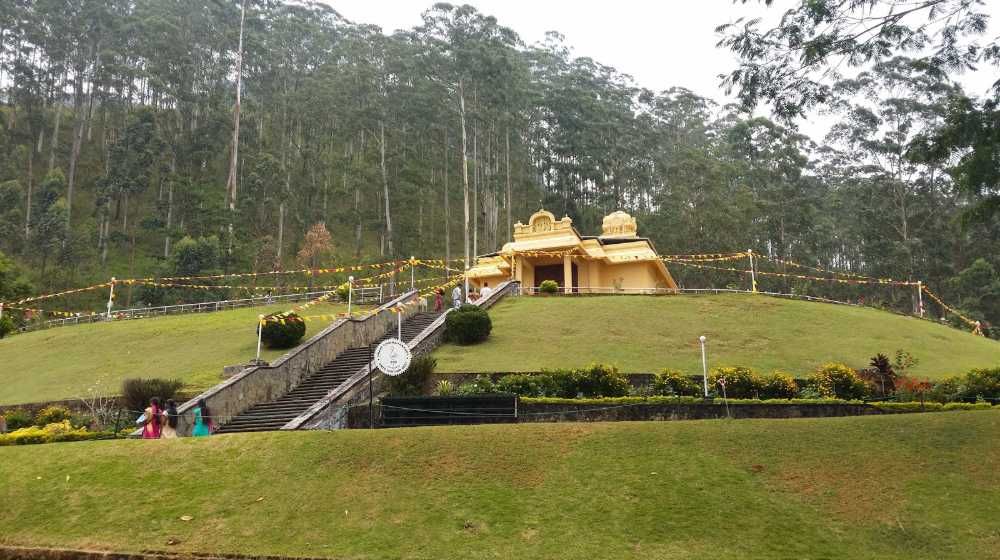
SHRI BHAKTA HANUMAN TEMPLE
Built by Sri Lanka’s Chinmaya mission and devoted to Hanuman, this significant and revered Hindu temple commemorates the legendary war between Rama and King Ravana. The temple houses for Hanuman’s 16 ft statue, a key character in the Hindu epic Ramayana, portrayed as an incarnation of Lord Shiva by some sacred texts.
The Chinmaya mission branch of Sri Lanka, dedicated to supporting both the philosophy of Ramayana and the pilgrimages of the Ramayana Trail. While traditionally not as popular among Sri Lankan Tamils as he is in India, Hindu missionaries and local Tamil religious leaders have also started to build Hanuman temples here in latest times.
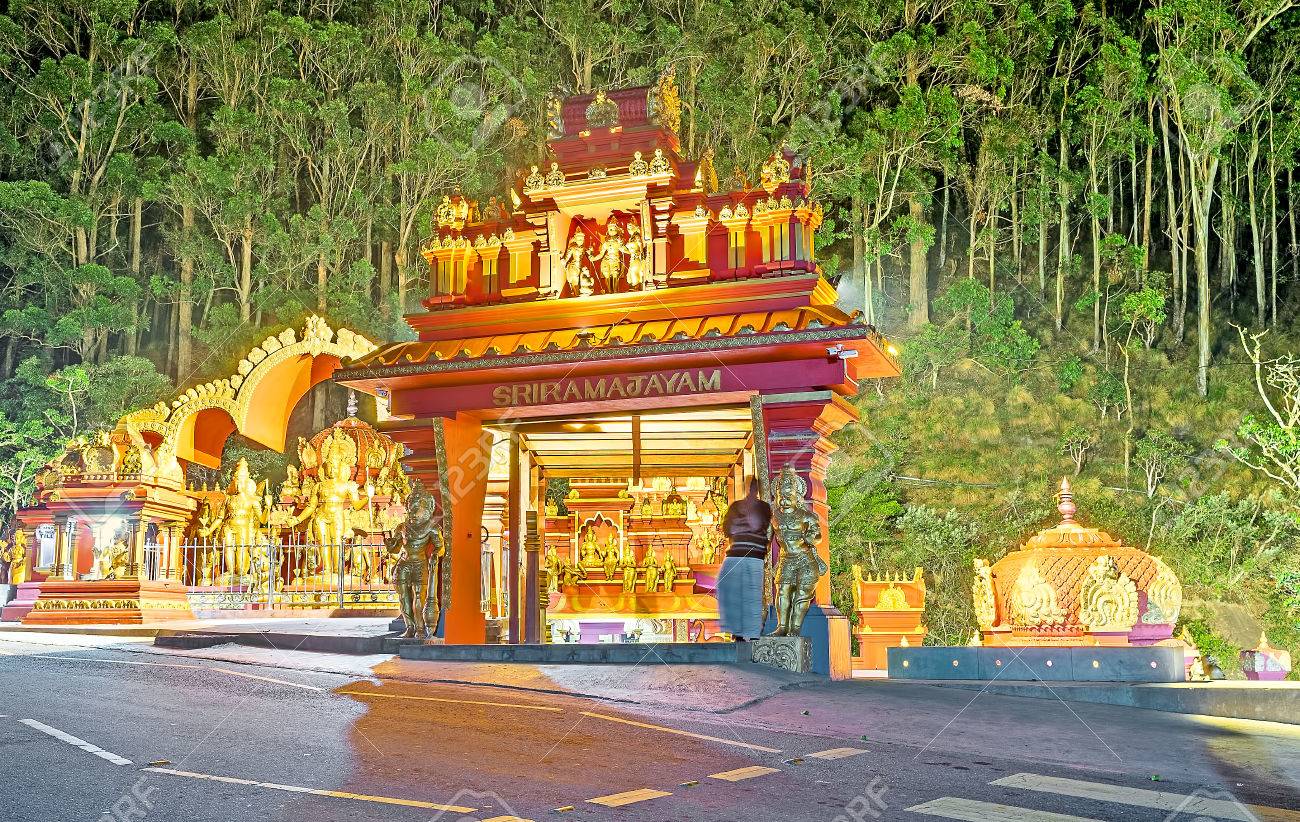
SITA AMMAN TEMPLE
Legend has it that Sita Eliya’s colorful Hindu Seetha Amman Temple marks the place where Sita prayed for Rama to rescue her when the demon king Rawana kept her captive. Many Tamil wedding groups make a point of stopping here for puja, gathering across a stream by the rock face where circular depressions are said to be Rawana’s elephant’s footprints.
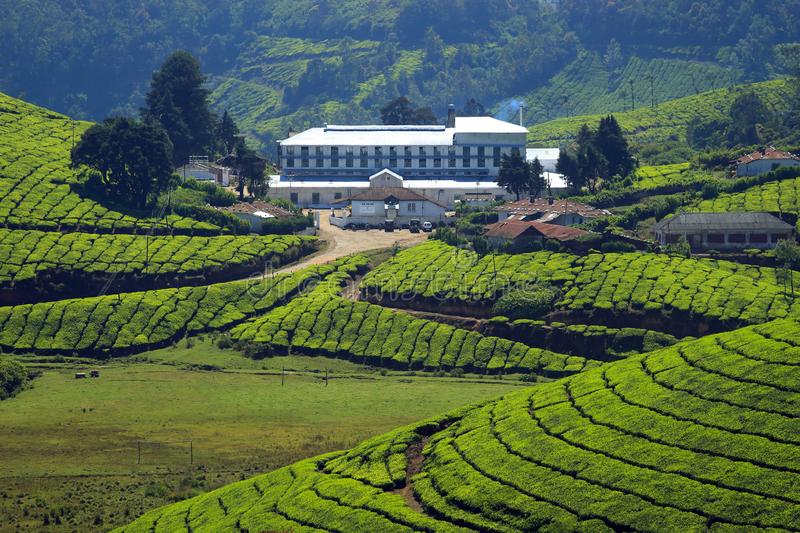
TEA PLANTATION & FACTORY
Nuwara-Eliya Located at approximately 2000 meters above sea level which is surrounded by lush tea plants and misty mountains. It is also the “heart” of the tea productions of Sri Lankans and produces the world’s finest tea. Ramboda Tea Factory is located in the town of Ramboda at about 1200 m above sea level.
And it's surrounded by quiet, scenic surroundings. Visiting the tea factory is an education on the procedures engaged in the withering, rolling, fermentation, drying, cutting, sieving and grading of tea. It's likely the most extensive tea factory tour around, and then you can taste the finest cup of tea from Sri Lanka and purchase the highest quality tea products from the showroom at the factory.
History of Tea
It was in 1824 that the British brought the first tea plant from China and planted it in Peradeniya, Kandy, in the Royal Botanical Gardens. It is regarded as the country's first non-commercial tea crop to be cultivated. A Scotsman was provided the assignment of increasing tea on just 19 acres of land in Loolecondera Estate in Kandy nearly two decades later, in 1867, James Taylor. This is the first commercial tea crop to be cultivated. Coffee growers shifted to tea as an alternative commercial crop with the disastrous coffee blight that swept through the coffee plantations. Taylor keen to experiment with tea, quickly set up his own' factory' tea, likely the first in the country in Loolecondera Estate's bungalow verandah.
The leaves were placed on tables by side and the firing on clay stoves was carried out over charcoal fires, with wire trays to air the leaves. A delicious tea was the end product, likely the first commercial cup to be brewed. Taylor later developed fundamental leaf rolling equipment, had a lot of individuals to help him in the tea process, and a year later he sent the 23 pounds of tea to London. With his creative thinking, Taylor continued to create the tea sector until he died at the age of fifty-seven in 1892. Pure Ceylon Tea stamped today with the Lion logo symbolizing 100% Pure Ceylon Tea packed in Sri Lanka is world-renowned as the world's best tea. Today's tea export is one of the country's most significant foreign exchange sources. The industry has more than 1 million direct and indirect employees and is the world's fourth largest tea producer.
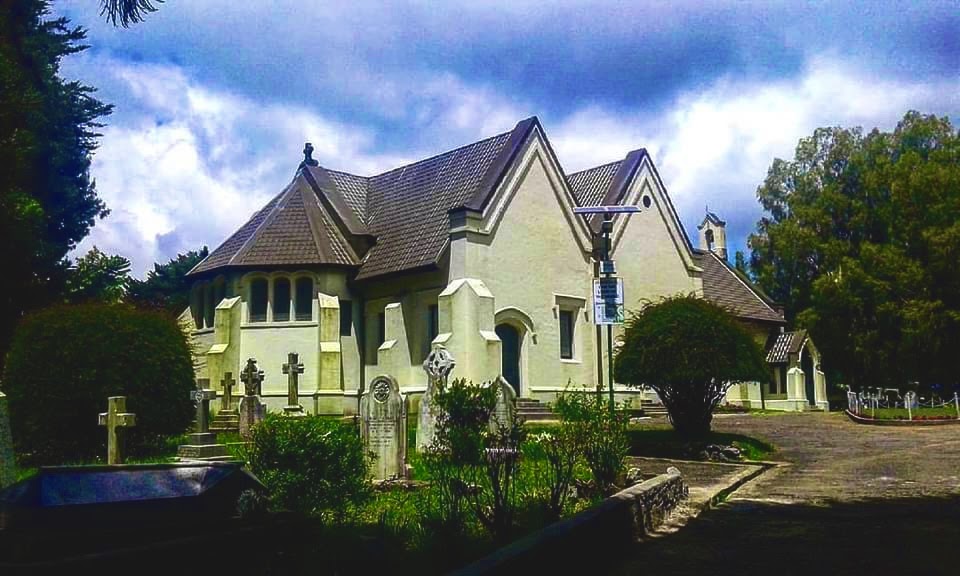
HOLY TRINITY CHURCH
Queen Elizabeth toured this quintessentially British church when she arrived at Nuwara Eliya during her official visit to Sri Lanka in 1954. The Queen later gifted the church a royal-blue carpet and a beautiful stained-glass window to commemorate what she considered to be a special highlight by all accounts.
It is reported that she was particularly fascinated by the enormous (and unfortunately now obsolete) pipe organ of the church and the two ancient lych-gates, where the planters who went to the church would dismantle. The church's first wedding was of a Ceylonian pair, and the first baptism in 1843 was of a soldier's girl in the 95th Light Infantry.
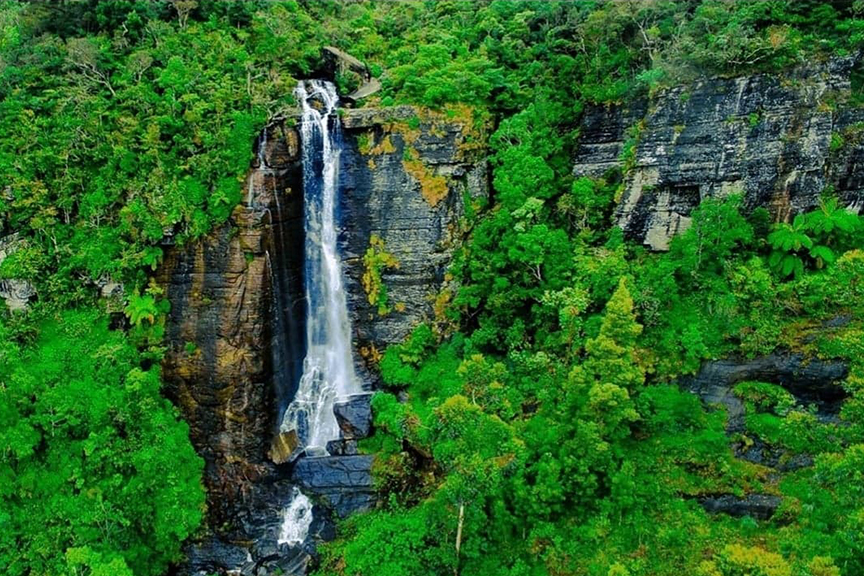
LOVER’S LEAP FALLS
Lover’s Leap waterfall is in the district of Nuwaraeliya and it is only waterfall that is nearest to Nuwaraeliya city. Lover’s leap isn’t a big waterfall, but it’s beautiful. The leap falls of enthusiasts in April month are very popular with local and international tourists. This waterfall’s main access route is from the side of Magastota square and the lake. Gregory lake side of this waterfall is a nice view point. This waterfall is less than 2 km from Nuwaraeliya city.
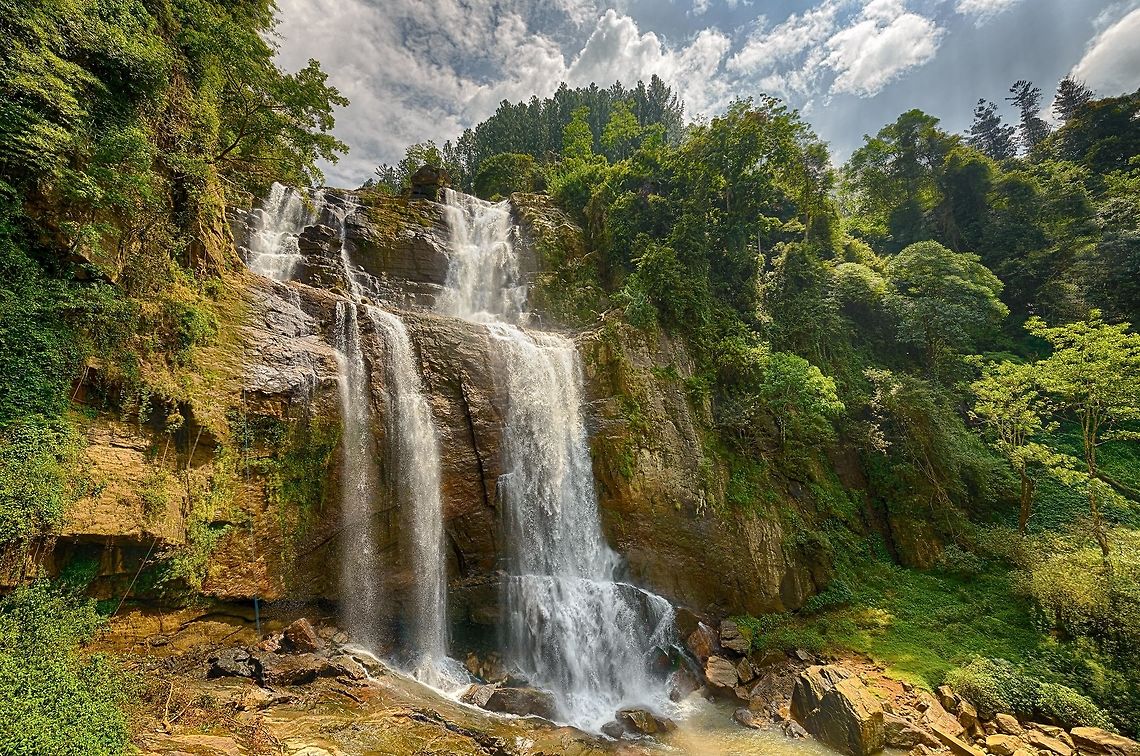
RAMBODA WATER FALLS
Ramboda Falls is 109 meters elevated and 11th largest waterfall in Sri Lanka, consisting of 03 parts and 729th highest waterfall in the globe located in the region of Pussellawa, on the Ramboda Pass highway. It was created by Panna Oya, a Kothmale Oya tributary. The fall’s altitude is 945 meters above sea level.
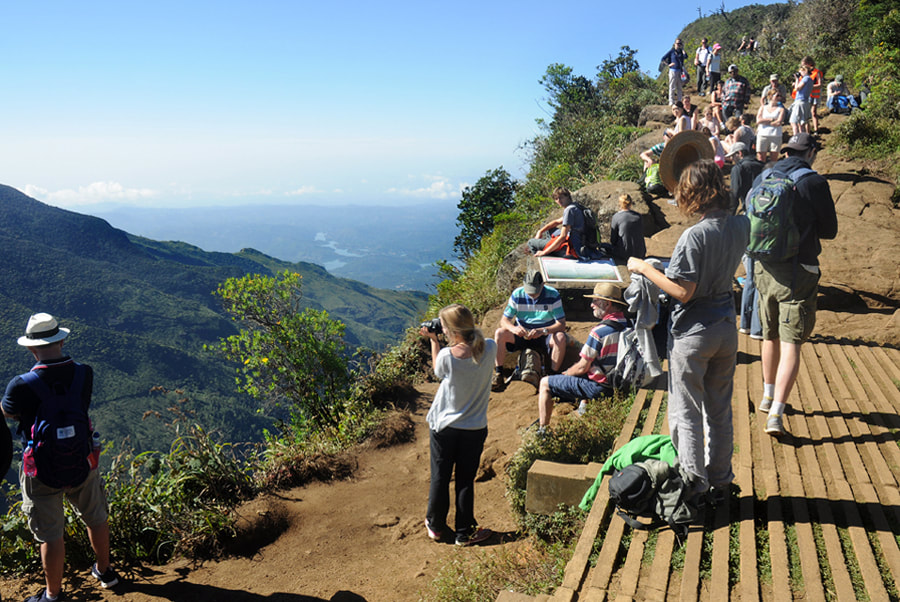
WORLD'S END
World’s End is located in Nuwara Eliya, Sri Lanka’s Horton Plains National Park. It is a pure cliff with a fall of approximately 4,000 feet (1,200 m). It is one of Horton Plains National Park’s most visited parts. It is one of Sri Lanka’s key tourist attractions. One kilometer from the main cliff is a smaller cliff with a drop of 1,000 feet, known as the Small World’s End. The Indian Ocean is visible on clear days, 81 km to the south.

HAKGALA BOTANIC GARDENS
More than 10,000 species of plants are found in what is one of the best-known botanical gardens in Sri Lanka, originally designed to grow cinchona, the bark of which yields quinine, once the only malaria treatment. Today, the garden is known for its orchids and roses, as well as temperate plants such as Australian, Bermuda and Japanese conifers and cedars, as well as Himalayan, Chinese, Persian, Mexican and Californian cypresses.
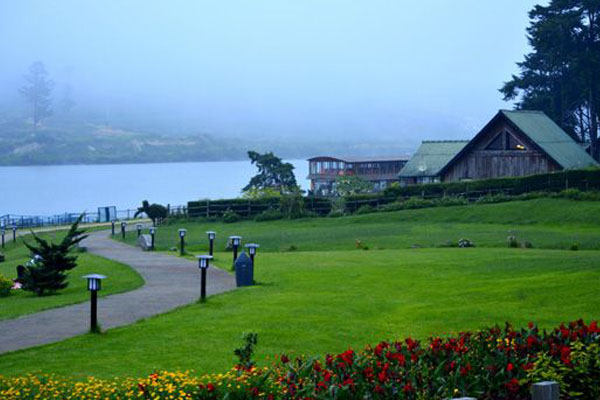
GREGORY LAKE
Built in 1873 by a former British governor, this amazing lake in the middle of Nuwara Eliya is now a favourite attraction for inhabitants and tourists alike. It also offers an increasingly famous seaplane taxi and airborne sightseeing services landing strip, as well as frequent flights between Nuwara Eliya and Colombo. Features include swan boat rides, pony rides, paddle boats and jet skiing, while paved walkways and bicycle trails run through hedged gardens in forms like birds and animals.
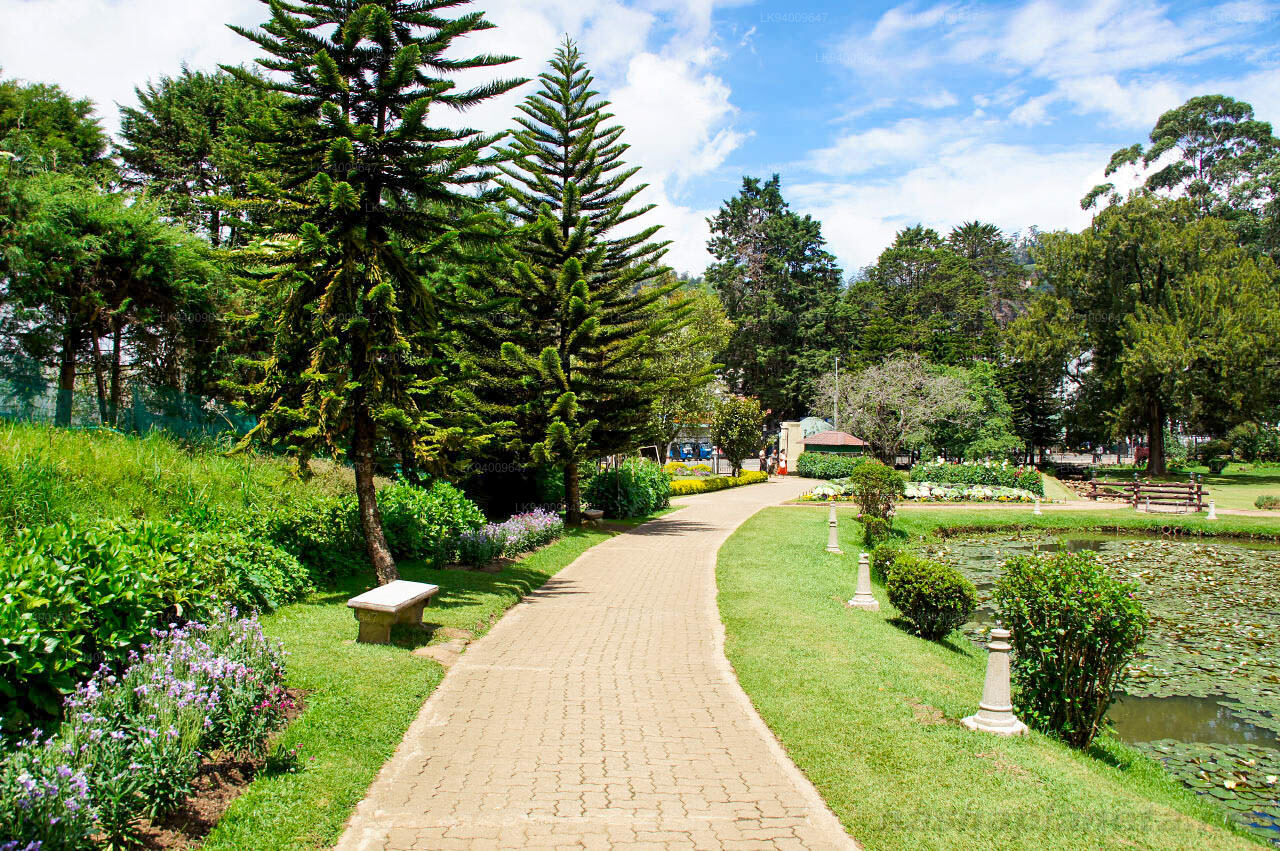
VICTORIA PARK
Nuwara Eliya’s Victoria Park, initially the study field for the adjacent Hakgala Botanical Garden, is known as one of South Asia’s finest public parks. Renamed in 1897 to celebrate the Diamond Jubilee of Queen Victoria, the colourful plants, trees, stone-flagged trails and green lawns are a favorite for both tourists and locals.
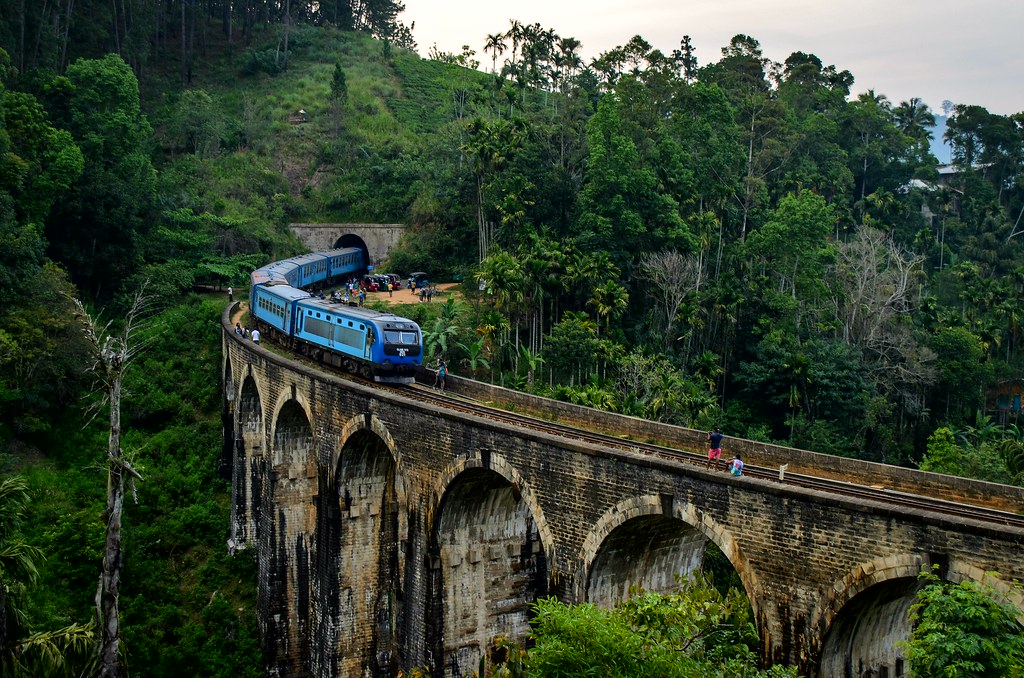
TRAIN JOURNEY NUWARA ELIYA TO ELLA
This highland scenic train rides a glimpse of panoramic green highland through the clouds as well as train moves through long tunnels with never-ending sequence where train reaches the highest elevation track in Sri Lanka and you pass through Tea Plantations, Tunnels, Bridges, Mountain Forests, Deep Valleys and Typical Highland Countryside during this 03 hours ride.
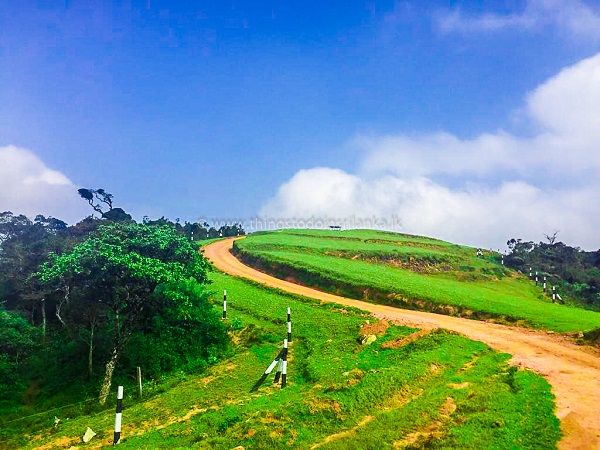
MOON PLAINS
The amazingly beautiful and vast slopes of the Moon Plains are among the jagged peaks of Sri Lanka’s Central Highlands. Located just off the city of Nuwara Eliya; this latest attraction was once the dump site of the tons of garbage used by the nearby city’s dwellers. It was cleaned and refurbished in 2010, and is now categorized by Nuwara Eliya Municipality as an Agricultural and Environmental Tourism Zone.
The Moon Plains are home to many wildlife elks, wild buffaloes, deer, the occasional leopard, and many bird kinds. The primary point of concern, however, is the' Mini World's End' perspective. A location on the apex of a sharply falling cliff, giving the surrounding landscape a 3600 perspective.

NEW ZEALAND FARM
There are two farms in Ambewela, Ambewela Farm and New Zealand Farm. It boasts its superior cattle breed, contemporary technology and high-quality pastures where cattle graze freely because of the ideal climate in the hill country. The farms have Ayreshire and New Zealand purebred livestock.
The farm management requires excellent care to provide them with a balanced diet and sterilized water to preserve the quality of milk from the cows. They also receive outstanding 24-hour healthcare. Also portion of the Ambewela farms are Sri Lanka's biggest grasslands. It has rabbits, pigs and goats besides the cattle.
